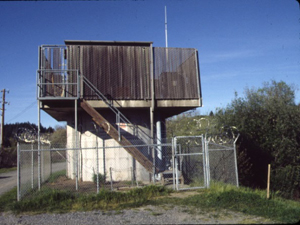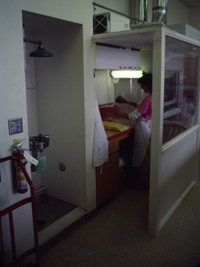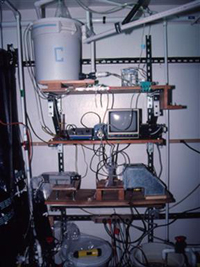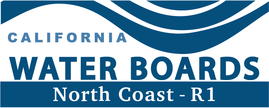Russian River "Early Warning" Project
Water Quality Management Planning Program [section 205(j)] on Toxic Substances Detection and Early Warning for the Russian River.
This project was funded by the US Environmental Protection Agency under Clean Water Act section 205(j) in 1985, and completed in 1988.
The overarching purpose of the project was to develop methods to detect and measure toxic substances in the Russian River at levels not possible with conventional analytical methods at the time and develop a mechanism to provide early warning of potential public health risks associated with those and other toxic substances.
The specific objectives were:

- Implementation and testing of macroreticular resin sampling methodology to detect heavy metals and selected organic chemicals at levels below the available methods at the time of the study;
- Testing and assessment of an early warning system based on behavioral analysis of captive water fleas (Daphnia pulex) by video camera on a real-time basis; and
- Recommendations for the implementation of a toxic substances early warning network for the Russian River.
The three-year project was a joint venture with the Sonoma County Water Agency, who supplied laboratory space and a secure site on the Russian River near Mirabel for placement and testing of early warning equipment. Anatec Laboratories, Inc. and Motion Analysis, Inc. developed and tested the methods and equipment for the behavioral analysis of water fleas exposed to various chemicals at their Santa Rosa laboratory and at the Russian River site.
Project documents available for the project include the:
Original workplan
Final Report
Project description and task-by-task description of the work and products, including development of a database program of sites known to have toxic chemicals.
Travel Time Reports
Estimates of the time for a substance to travel down the river from the forks near Calpella to Guerneville were made and compared using three methods: empirical data from the 1982 formalin spill at Ukiah, flood crest data from the Sonoma County Water Agency, and water velocity data from USGS flow measurement data.
- Main Report
- Appendix A - travel time estimates from 1982 formalin spill
- Appendix B - travel time estimates from flood crest data
- Appendix C - travel time estimates from river velocity data
- Appendix D - travel time estimates from Coyote Dam release
- Appendix E - comparison of methods
Macroreticular Resin Sampling

The use of macroreticular resins to accumulate and detect heavy metals and selected organic chemicals at levels below the available methods at the time of the study, including data from actual monitoring
Brief description and photos
- RR Early Warn Resin summary
- Final Report
- Appendix A - A guide to the sampling methodology
- The attendant quality assurance program
Motion Analysis Early Warning

This element of the project tested the applicability of using live organisms in a flow-through river water system to detect toxins through analysis of their behavioral reactions to a toxicant.
Brief description and photos
(Page last updated 10/18/17)
Water is a precious resource in California, and maintaining its quality is of utmost importance to safeguard the health of the public and the environment.
Statewide Campaigns
EPA Water Sense
File an Environmental Complaint
Save Our Water
Flex Alert
Register to Vote



